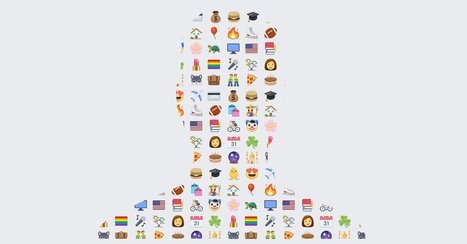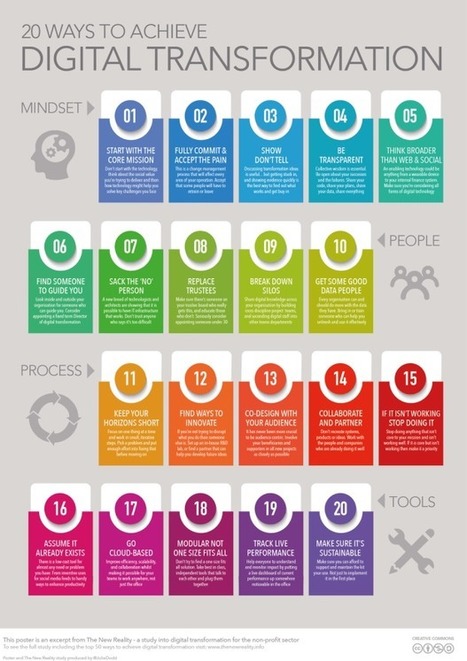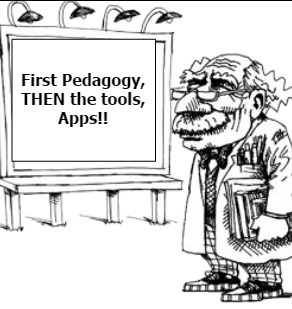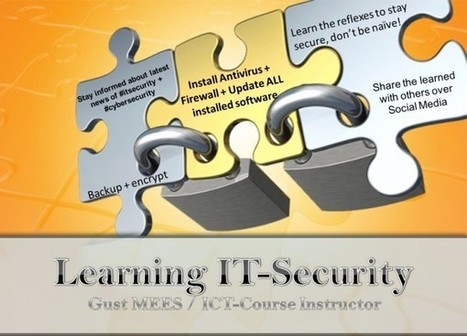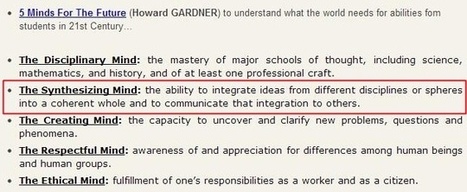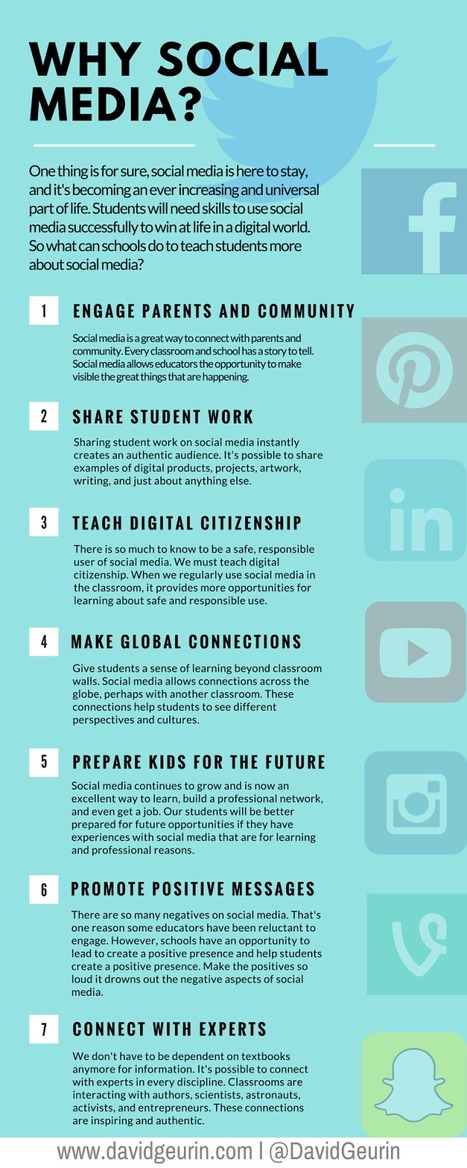 Your new post is loading...
 Your new post is loading...
We’ve witnessed a massive shift in the way teaching and learning takes place in the last decade.
Knowledge and information used to be a limited, protected resource. For teachers and students alike, textbooks and libraries have been the only source of learning and development. In other words, options for finding new content to research, analyze, and learn from has conventionally been limited. Learn more / En savir plus / Mehr erfahren: https://www.scoop.it/topic/21st-century-learning-and-teaching/?&tag=Curation
Via Yashy Tohsaku, Gust MEES
THE stupidity of companies to ask (force!!!) for a 2FA authentication... BUT in the mood actually, WHY???!!! WE are in 2020: It is well known THAT a 2FA authentication ISN'T anymore secure, proven by Cyber-Security experts and EVEN the FBI reported and sent out awareness posts!!! SO, first of all let us find… Learn more / En savoir plus / Mehr erfahren: https://www.scoop.it/t/securite-pc-et-internet/?&tag=Two-factor+authentication
Via Gust MEES
Upcoming changes to Facebook within Scoop.it! [Effective Aug 1]
← Release notes
On August 1st, you might notice some changes to Facebook on Scoop.it. Don’t worry, these changes are totally normal and we've got the answers to your questions below. I wanted to let you know what to expect:
Summary: As of August 1, you will start to see a reminder every 90 days to log into your Facebook account to reauthenticate and secure your connection. You will no longer be able to share content directly to personal Facebook profiles. Sharing to your Facebook Pages will not be impacted! Learn more / En savoir plus / Mehr erfahren: https://www.scoop.it/t/21st-century-learning-and-teaching/?&tag=Curation
Via Gust MEES
For some people, artificial intelligence still makes them feel a little…uneasy. It’s often depicted as sinister-looking robots who will take over our lives and our jobs, or even replace humanity.
The reality is, we are already in an age in which AI is infused into our everyday lives in ways that augment rather than replace people. Digital assistants such as Cortana can find you the closest restaurant, dictate a text to your friend, manage your email inbox and even help you create more beautiful PowerPoint presentations. Whether you realise it or not, AI is an integral part of all these interactions. And while it’s not something you can often see or touch, I bet you’re already experiencing the benefits of AI every day.
So, how does AI technology actually work? AI is a machine’s ability to recognise images and words, learn and reason in ways that are similar to people. Data is the fuel for AI, and our world is awash with data as our daily interactions are increasingly digital. AI uses sophisticated algorithms to sort through piles of data, spot patterns and make predictions – tasks that would be repetitive and time-consuming, if not practically impossible, for people to do manually. AI can do this work on our behalf and give us back more of life’s most precious commodity - time. Learn more / En savoir plus / Mehr erfahren: https://www.scoop.it/t/21st-century-learning-and-teaching/?&tag=AI
Via Gust MEES
Everyday, there are 4 million blog posts, 100,000 news articles and 500,000 hours of video published on the Internet. A wealth of information and knowledge. A wealth of information and knowledge that is lost for most companies, at least for the most part.
Lost?
Step 1: content curation
Not entirely. Thanks to content curation technology, the Web can now be filtered. With content curation tools and platforms such as Scoop.it (among others of course), we can use more or less sophisticated ways to filter this huge amount of content that is published daily to zoom in on what matters to us. Good content curation technology is essential. It saves people a huge amount of time looking for content to share for marketing purposes or information that helps their organization make better decisions. And perhaps as importantly, without these filters, we would just be able to search – not discover. We would still find answers to what we don’t know but we wouldn’t know what we don’t know.
But until recently, all the solutions we’ve offered to deal with information overload – ours included – have revolved around the same basic idea: more – or more sophisticated – filters. Learn more / En savoir plus / Mehr erfahren: https://www.scoop.it/t/21st-century-learning-and-teaching/?&tag=Curation
Via Gust MEES
Technology has changed the dynamic of curating information for teachers and students. It gives access to information never before so readily available, or so easily curated. Technology also enables users the ability to publish acquired information in various formats for consumption by others. Additionally, it offers a means in many cases to analyze data in ways that could not be done so easily before technology had become so ubiquitous.
Communication has been upended by technology. There are many ways for people to communicate. We have gone way beyond the dial up telephone. Not only can we communicate with voice, but we can also transmit documents, files, videos, audio files, and live streaming. Gutenberg and Bell would most certainly be impressed.
Access to all of these wonders of technology requires a different mindset than that of the early 20th century. It requires the ability to be flexible and adapt to the constant changes that come with technology. It requires one to commit to being a lifelong learner. It also requires a strict adherence to critical thinking in order to recognize, that which offers value from that which is crap. Learn more / En savoir plus / Mehr erfahren: https://gustmees.wordpress.com/2015/07/19/learning-path-for-professional-21st-century-learning-by-ict-practice/
Via Gust MEES
A lot of businesses frequently use the term Digital Transformation, but what does it actually mean?
We have become so accustomed to digital technology, we are no longer able to imagine life without it. And yet, when it comes to the digital transformation of the work environment, we still have a long way to go. The greatest obstacle for digital transformation is simply, people.
Make digital transformation a capability, not a project; transform operations not just customer experience #hbrwebinar @gwesterman
— Parag Gogate (@paraggogate) 18 août 2017
There are a number of things that don’t have to do with technical innovations that are going to make the process more complicated. That’s not to say that creating the proper infrastructure to accommodate the rapid pace of development is not going to be a major issue in and of itself. But a number of key factors in implementing digital solutions are related to people. And while is relatively easy to change and adapt to new technology, people are not.
Many global companies start to realize their business will be mostly digital within the coming years, but not many are really interested in dealing with the digital transformation. Learn more / En savoir plus / Mehr erfahren: http://www.scoop.it/t/21st-century-learning-and-teaching/?&tag=Digital+transformation
Via Gust MEES
A new study lends credence to what you’ve probably always suspected: social media is having a pretty negative effect on teenagers — Instagram and Snapchat being the worst culprits. The study, published today and called “Status of Mind,” was conducted by researchers for the Royal Society for Public Health in the UK. The researchers surveyed 1,479 British youths ages 14-24, asking them how they felt the different social media networks effected their mental health. They took in several factors such as body image, sleep deprivation, bullying, and self-identity. The results suggest the two worst social media networks for kids are Instagram and Snapchat, as they had terrible scores for body image, bullying, and anxiety. Twitter and Facebook weren’t much better, though. YouTube was the only one that apparently inspired more positive feelings than negative ones. Learn more / En savoir plus / Mehr erfahren: http://www.scoop.it/t/social-media-and-its-influence
Via Gust MEES
Exponential technologies have a tendency to move from a deceptively slow pace of development to a disruptively fast pace. We often disregard or don’t notice technologies in the deceptive growth phase, until they begin changing the way we live and do business. Driven by information technologies, products and services become digitized, dematerialized, demonetized and/or democratized and enter a phase of exponential growth. Nicole Wilson, who was Singularity University’s vice president of faculty and curriculum until last year, believes education technology is currently in a phase of deceptive growth, and we are seeing the beginning of how exponential technologies are impacting 1) what we need to learn, 2) how we view schooling and society and 3) how we will teach and learn in the future. [Gust MEES] Simply put, as WE (#Schools) DON'T know WHAT THAT world would be, WE SHOULD prepare the #students #LEARNers for <===> #LEARNing2LEARN to become #LifeLongLEARNing persons! Please check my #blog post <===> https://gustmees.wordpress.com/.../teaching-was.../ <===> #ModernEDU #Coaching
Via Gust MEES, Jim Lerman
|
As you might expect, Brin expects Alphabet and others to find more uses for AI. But he also acknowledges that the technology brings possible downsides. “Such powerful tools also bring with them new questions and responsibilities,” he writes.
AI tools might change the nature and number of jobs, or be used to manipulate people, Brin says—a line that may prompt readers to think of concerns around political manipulation on Facebook. Safety worries range from “fears of sci-fi style sentience to the more near-term questions such as validating the performance of self-driving cars,” Brin writes.
All that might sound like a lot for Google and the tech industry to contemplate while also working at full speed to squeeze profits from new AI technology. Even some Google employees aren’t sure the company is on the right track—thousands signed a letter protesting the company’s contract with the Pentagon to apply machine learning to video from drones. Learn more / En savoir plus / Mehr erfahren: https://www.scoop.it/t/21st-century-learning-and-teaching/?&tag=AI https://www.scoop.it/t/21st-century-learning-and-teaching/?&tag=Ethics
Via Gust MEES
If you want to be a successful digital marketer, then you should be aware of the latest updates related to social media. Being one of the most widely used social media platforms out there, Twitter keeps on redefining itself. A while back, it announced the latest update regarding the 280 character limit for tweets. The update was certainly a big relief to many as almost all the marketers used to struggle with the previous 140 character limit.
Now, you can easily level up your social media marketing game on Twitter and reach out to a wider audience for sure. To make things easier for you, I have come up with some expert suggestions that will help you make the most of the Twitter’s latest update.
Details of Twitter’s new update (in a nutshell)
For almost a year now, there have been speculations about the Twitter’s new character limit. It was in the last quarter of 2017 when Twitter finally announced the 280-character update for posting tweets. For languages except Chinese, Japanese, and Korean, Twitter has increased the character limit for tweets from 140 to 280 characters. The attached photos, GIFs, polls, etc. won’t be counted as characters. Though, if you will include a URL, then it will increase the character count. Therefore, it is still recommended to use a URL shortening service while including website links in tweets.
12 ways to make the most of Twitter’s new update
Now when you can tweet in 280 characters, you don’t need to double-check every word you write. Furthermore, it can help you answer customer queries or explain a product to your audience. Here are some interesting ways to use Twitter’s new update. Learn more / En savoir plus / Mehr erfahren: https://www.scoop.it/t/21st-century-learning-and-teaching/?&tag=press
Via Gust MEES
Self-sovereign identiy explained
This concept is called self-sovereign identity. Self-sovereign identity starts with the notion that we all are the makers of our own identity, online and off. Because they do not rely on any centralized authority, self-sovereign identity systems are decentralized, mirroring the way identity works in real life.
Offline, our interactions flexibly support the use of attributes and credentials from numerous third parties, all presented by the very person they’re about, typically by taking those credentials out of a wallet or purse and presenting them to someone else to verify. For example, take a driver’s license. States issue it as a credential that you’re authorized to drive. But, it’s useful for a lot more. When you show up at a bar and the bartender wants proof you’re over 21, you show them your driver’s license.
How blockchain can solve the identity dilemma Self-sovereign identity systems use blockchains – distributed ledgers – so that decentralized identifiers can be looked up without involving a central directory. Blockchains don’t solve the identity problem by themselves, but they do provide a missing link that allows things we’ve known about cryptography for decades to suddenly be used. That allows people to prove things about themselves using decentralized, verifiable credentials just as they do offline. Learn more / En savoir plus / Mehr erfahren: https://www.scoop.it/t/21st-century-learning-and-teaching/?&tag=blockchain
Via Gust MEES
So how can AI help?
Communication: Students and teachers will be able to communicate instantly with one another as well as to connect with other forms of AI around the world. Students instantly paired with peers, helping each student to expand their own personal learning networks, with personalized and more authentic connections that will meet the students’ interests and needs at any given moment. Think of the benefits for being able to converse with AI or a virtual peer, which has been located based on an assessment of student needs and error analyses. Build foreign language skills, talk to someone about school, family, life in a country being studied, possibilities are endless for language learning.
Differentiation: With the availability of AI, students and teachers will be able to connect with resources they need exactly when they need them. The entire internet of resources accessible within seconds, deliverable to each student saving valuable time for more interaction between teacher and student, and students and students. Through AI, students can have access to one to one tutors, creating more authentic learning experiences by pairing students with an expert or a virtual peer to learn with. Think of the benefits if each student could have instant access to a tutor wherever and whenever they needed one.
Personalization: What better way to offer more personalized learning opportunities for students than to have AI be able to analyze student responses, determine areas of need and interest, and find resources or create new questions to help students to greater understanding of the content. What about the potential for informing the classroom teacher, and working together to create new learning opportunities for students, but in a faster way, that relates directly to the student needs and offers authentic and timely feedback.
Exploration: With the rise of augmented and virtual reality, and the benefits of bringing these into the classroom for students to have a more immersive learning experience and to see places and explore things that otherwise they would not, AI can be a tremendous benefit for this. Through AI, resources could be found instantly based on student responses, or for the entire classroom to experience. Capabilities such as these are not something that will be limited by the time and place of the classroom setting. AI could show students want they want to explore, find ways to bring the content to life instantly.
Assessments: AI could help teachers to assess students and streamline the grading process, with the added benefit of being able to quickly take the data, provide an analysis for teachers, so that time can be saved for more classroom interactions. It can help with student achievement, making sure that each student has the opportunity to learn and grow, benefitting from the faster responses through AI.
Learn more / En savoir plus / Mehr erfahren: https://www.scoop.it/t/21st-century-learning-and-teaching/?&tag=AI https://www.scoop.it/t/21st-century-innovative-technologies-and-developments/?&tag=AI
Via Gust MEES
Teaching online is easier and more effective when you have the confidence to be yourself! When you teach online, it’s vital to let your real personality shine through. Authenticity and honesty help to make a genuine connection with your students. It’s a terrible idea to try and be something you’re not. Your students don’t want to see a sweaty man in a tight jumpsuit impersonating a legend. And pretending to be someone else is exhausting. You stop being an online teacher and become an actor instead – in a role you’re not comfortable in (and even worse, maybe not prepared for). Being your real self makes it easier for your students to give you the respect you deserve. It’s always pretty obvious when someone is being authentic rather than faking enthusiasm or expertise. Learn more / En savoir plus / Mehr erfahren: http://www.scoop.it/t/21st-century-learning-and-teaching/?&tag=Counterfeit+Leadership http://www.scoop.it/t/21st-century-learning-and-teaching/?&tag=Rise+of+the+Professional+Educator
Via Gust MEES
|



 Your new post is loading...
Your new post is loading...







![Upcoming changes to Facebook within Scoop.it! [Effective Aug 1] – Scoop.it FAQ and Support | #Curation #SocialMedia #sharing | Distance Learning, mLearning, Digital Education, Technology | Scoop.it](https://img.scoop.it/ooHFC2LQtY514xyxc_9fpDl72eJkfbmt4t8yenImKBVvK0kTmF0xjctABnaLJIm9)
